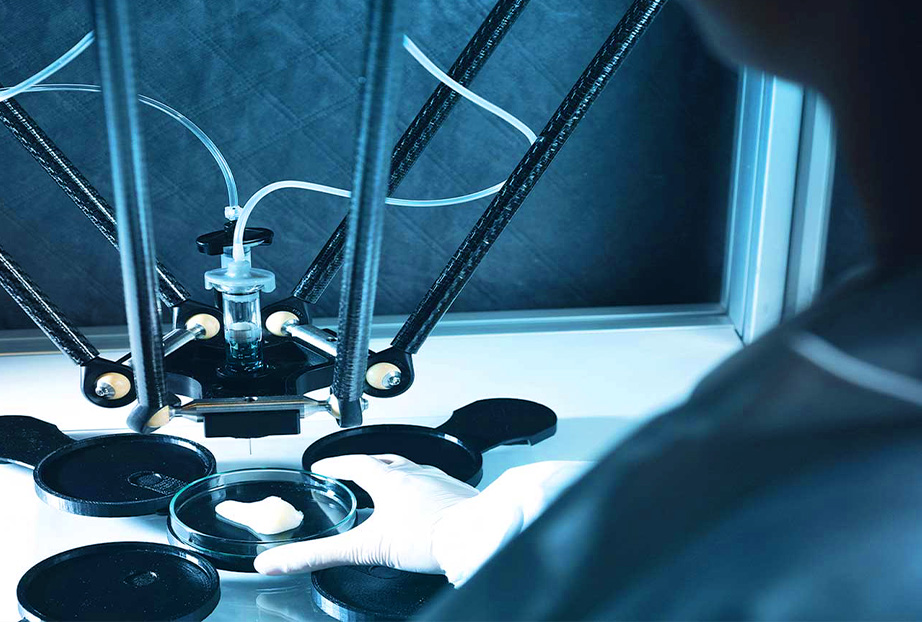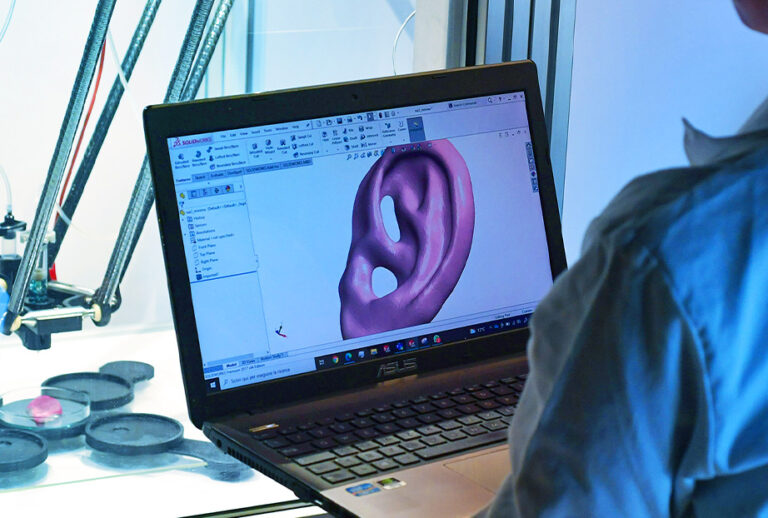3D Bioprinting
Advanced solutions for biofabrication of biocompatible tissues
3D Bioprinting technology for the fabrication of biocompatible tissues
3D bioprinting signifies a monumental advancement in the realms of Tissue Engineering and Regenerative Medicine, as well as in pharmacological and cosmetic research. It revolutionizes testing and manufacturing processes for drugs and cosmetic products. A significant constraint in traditional 3D bioprinting systems lies in grappling with the intricacies of the human body. This challenge manifests in the difficulty of concurrently bioprinting multiple biological materials at distinct resolutions to effectively replicate the complexity of human tissues.
Electrospider, the multi-scale, multi-material 3D bioprinting platform
Bio 3D Printing, an innovative startup arising from the collaboration between SolidWorld GROUP and the University of Pisa, introduces a groundbreaking solution to the challenge. For the first time globally, Electrospider, an advanced 3D bioprinting platform, holds the promise of overcoming the complexities associated with simultaneous printing of multiple biological materials at varying resolutions. As the first multi-scale, multi-material 3D bioprinting technology, Electrospider is capable of generating 3D cellular constructs having the heterogeneity and complex topology of human tissues.

How does it work?
Electrospider was conceived to combine 3D bioprinting, microextrusion, electrospinning and ink-jet technology in a single platform in order to process a wide range of biomaterials on both micro and nano scales in a single printing process.
Electrospider is also a 3D bioprinting platform designed to be modular, totally customizable with a variety of accessory functions capable of satisfying the needs of the end user.
Applications in medicine
One compelling capability of Electrospider is its ability to recreate,using cells sourced directly from patients, in vitro experimental models of diseases spanning various types, such as oncological and neurodegenerative conditions. This facilitates the in-depth study of their pathogenesis, enabling the prediction of the most effective therapeutic approaches and paving the way for personalized drug therapy.


Pharmacological and cosmetic research
Looking to a future in which research is also truly personalized, 3D bioprinting represents the technology that can radically change the paradigms in experimentation in the pharmacological and cosmetic sectors, as a fragment of tissue is sufficient to evaluate effects, risks, quality action and other parameters of a medicine or cosmetic.
In this context, Electrospider is an immediate, safe and effective response as it offers the possibility of physically generating 3D cellular constructs, even patient-specific, as an environment in which to test drugs or cosmetics. This environment is decidedly more “physiological” than conventional 2D cellular environments, the process is faster, the cost is lower than conventional tests and the biological relevance for humans is better than common tests carried out on animals.
The new frontiers of regenerative medicine
Regenerative medicine represents one of the greatest challenges of modern medicine. In the long term, therefore, Bio3DPrinting with Electrospider aims to use cells taken from the patient to bioprint perfectly functioning organs modeled starting from the patient’s anatomy, as a therapeutic solution to organ transplantation. In this way it will be possible to respond to the limited availability of organs for transplants and resolve the problems connected to the anti-rejection treatments to which the patient must be subjected for the rest of his life.

Bio3DPrinting
Discover our advanced and innovative biofabrication solutions with Electrospider.

